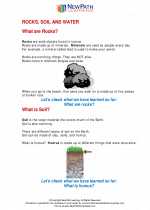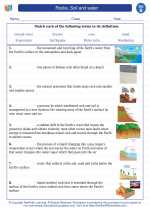Liquid
A liquid is one of the three common states of matter (the others being solid and gas). It has a definite volume but takes the shape of its container. Liquids have the ability to flow and are relatively incompressible.
Properties of Liquids
1. Definite Volume: Liquids have a fixed volume that does not change, regardless of the shape of the container.
2. Ability to Flow: Liquids can flow and take the shape of the container they are in.
3. Incompressibility: Liquids are difficult to compress, meaning their volume remains relatively constant even under pressure.
4. Surface Tension: Liquids have surface tension, which allows them to form droplets and exhibit behaviors such as capillary action.
5. Viscosity: Liquids vary in their resistance to flow, a property known as viscosity. For example, honey has a higher viscosity than water.
Examples of Liquids
1. Water
2. Milk
3. Juice
4. Oil
5. Vinegar
Study Guide
- What are the three common states of matter?
- What is the defining characteristic of liquids?
- Give an example of a liquid that exhibits high viscosity.
- Explain the concept of surface tension in liquids.
- How does the volume of a liquid change with changes in its container?
Understanding the properties and behavior of liquids is an important aspect of elementary science education. It is essential for students to grasp the concepts of volume, flow, and surface tension, as well as the practical applications of these properties in everyday life.
[Liquid] Related Worksheets and Study Guides:
.◂Science Worksheets and Study Guides Second Grade. Rocks, Soil and water

 Worksheet/Answer key
Worksheet/Answer key
 Worksheet/Answer key
Worksheet/Answer key
 Worksheet/Answer key
Worksheet/Answer key
 Vocabulary/Answer key
Vocabulary/Answer key
 Vocabulary/Answer key
Vocabulary/Answer key
